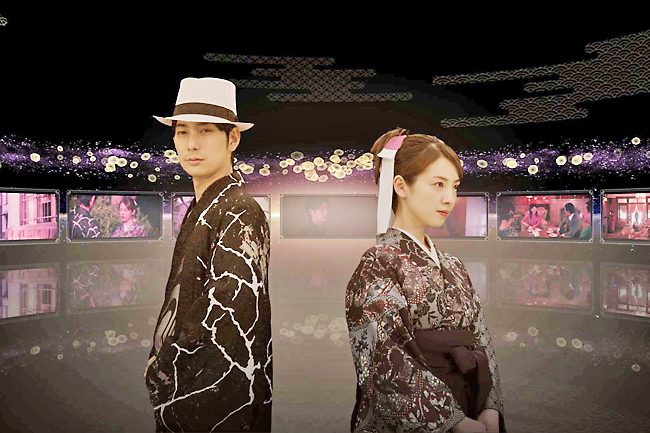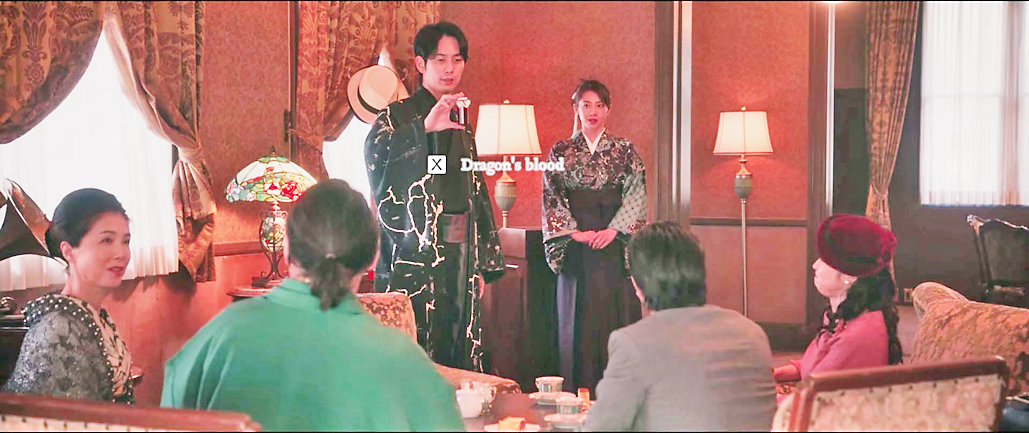Jon Bailes
THE WASHINGTON POST – The last time Square Enix brought us a full-motion video game, it was, frankly, an unmitigated disaster. So it’s a brave move for them to get back on that horse. Thankfully, the Japanese publisher has chosen more wisely with The Centennial Case: A Shijima Story, a TV-miniseries-style murder mystery that far better demonstrates the potential of video games that place an emphasis on the video. While its cinematic and interactive elements don’t always meld convincingly, it serves up a tightly knotted tale that should pull you in with its dastardly deeds and superior sleuthing.
The story begins in present-day Japan, as upcoming crime novelist Haruka Kagami accompanies friend and scientific advisor Eiji Shijima on a visit to his family home, hoping to tackle the riddle of an unidentified skeleton recently discovered on the grounds. Before Haruka can poke her nose into that conundrum, however, a fresh murder occurs, followed by a landslide that blocks off access to the estate. As tensions surge and the police remain cut off, it falls on Haruka to unveil the killer.
To understand the full picture, though, Haruka not only has to solve this latest homicide but rummage through the family’s history, consulting journals describing murders that go back a century and appear to have links to the Shijima name. Some of the game’s six main episodes take place in flashbacks, relaying events in 1922 and 1972. The common factor between them, you’ll soon discover, is the legendary Tokijiku, a fruit that supposedly grants eternal youth to those who consume it.
All but one episode revolve around a single murder and unfold like a classic Agatha Christie story. In each episode’s first phase, “the incident”, you can pretty much just sit back and watch the show. The scene is set, and a small gathering of archetypal characters – the intimidating uncle, the ambitious singer, the henpecked husband – files in, armed with concealed motives and grudges. Then one turns up dead, and Haruka (or her past equivalents played by the same actress) conduct an investigation.


The story then pauses, and you’re whisked off to an abstract space for the “reasoning” phase, where you help the detective get her thoughts in order. Here, pertinent questions and potentially significant clues are represented as hexagonal tiles, and you match them together on a grid to form hypotheses, which trigger a short animated sequence imagining how events could have transpired.
You might connect the question of the cause of death, for example, to a rock found lying near the body, which induces competing hypotheses – perhaps the killer snuck up and deliberately smashed their victim’s skull, or perhaps the victim slipped and hit their head during a scuffle.
Once you’ve generated a wealth of such theories covering means, motive and opportunity, the action resumes with the “solution” phase, that traditional climactic scene where suspects sit together obediently in a room while the detective exposes the assassin among them.
Hopefully, by now you have a decent idea of whodunnit and howdunnit, because the detective’s big reveal speech will pause periodically for the player to answer a multiple choice question correctly to keep heading toward the truth. Make a mistake, and you get another try, but take a hit to your final episode rating (and probably your ego), a metric that doesn’t impact the rest of the game.
Initially, this division of episodes into discrete phases seems risky for The Centennial Case, as it frontloads each one with up to 30 minutes of near-passive viewing (you get to make a few noncritical dialogue choices, and press a button when a clue prompt appears), so the live-action portions effectively have to stand up as compelling TV.
Fortunately, the quality of writing and performances is a cut above those in many live-action games, which are often hampered by low production values. Sure, you should avoid the English dub, where attempts to lip-sync the Japanese performances lead to staccato delivery, and the tone is more Murder, She Wrote than True Detective, but it uses that hokeyness deftly to aim knowing winks at genre tropes.
In particular, there’s a tongue-in-cheek tone to the performances, helped by a decision to redeploy many of the same actors as different characters in each period, as they really seem to relish switching from suspect in one episode to victim or killer in another. All come equipped with their finest suspicious expressions, displaying furtive glances and exaggerated shock whenever their names come up in an investigation. Especially delicious is the sequence of lingering extreme close-ups you’re offered as you finally decide who to accuse, where each actor gulps, sweats and blinks nervously under the spotlight.
The pick of the cast, however, is Nanami Sakuraba as Haruka (and the detectives of the past), taking the lead as a central character who’s enjoying her chance to play investigator, pointing fingers with the gusto of a Phoenix Wright objection. Her righteous announcements in the solution phase are delivered so confidently, it’s all the more amusing when your choices send her down a blind alley, and she suddenly realises she has nothing to back up her claim.
Cue quizzical looks and an embarrassed halt from the triumphantly ascending backing music.
The plotlines, meanwhile, are proficiently organised, replete with guileful twists and walls of misdirection. Yes, some revelations stretch plausibility, but often when I thought something didn’t add up, I soon realised there had been signs pointing in that direction after all. Even clues introduced early on that seem to lead nowhere may resurface and reveal their significance in subsequent episodes.
One big obstacle The Centennial Case faces is how to make players feel involved, since its heavy reliance on live action limits your input. On that count, it’s less successful. It closely guides your hand throughout, even in a late chapter that resembles a kind of escape room puzzle and switches to a 3D game engine so you can freely look around. Connecting questions and clues is made easier by patterns on the tiles that have to match, which is welcome when you’re not sure of the answer, but can turn reasoning into a kind of jigsaw puzzle.
What can really make or break the equation, however, is how much you click with the game’s “thinking”. The detective’s catchphrase in Haruka’s novels is “the path of logic lines up,” but the questions really is whether her path of logic lines up with yours, and I found the results to be hit and miss. Sometimes a clue that I thought required extensive deliberation was barely mentioned in the reasoning phase, or conversely, a series of questions wasted time on details I found self-evident.
Should it not go without saying, for example, that a victim lying in a pool of blood with a ferocious gash in her neck wasn’t clubbed senseless with a small wooden box?
Mismatches occurred in live play more than I expected too. In one instance, Haruka is asked how she could tell Eiji’s mother was his stepmother rather than biological mother. The answer staring you in the face – she’s too young! – isn’t among the options, because the plot wants to drive at something else.
On other occasions, I chose an answer believing there was evidence to support my thinking, only to be told I was wrong because I guess the writers hadn’t thought of the same angle.
And while in most cases I managed to identify the correct culprit, not once did I fully comprehend the “trick”, ie the convoluted method used to commit the murder a la Sherlock Holmes, they’d used until I landed a few lucky guesses in the solution phase, and it’s frustrating when you’re always partially led to the answer.
Even so, I think it makes sense that the finale of a murder mystery should sustain a level of, well, mystery, and it’s a testament to the intricacy of the plots that they don’t prise open with ease. All the clues you need are there in some form or another, but it was only in hindsight that I could see how the few pieces of evidence I couldn’t quite explain were key to slotting everything in place.
Most importantly, despite its limitations, The Centennial Case is a more compelling thriller because of its interactive elements. I was keen to discover where each story ended up, not only due to the solid scripting and cinematics, but also because the reasoning and solution phases encouraged analysis, asking me to question the assumptions I might make when merely watching TV. Once the concept of seeking hypotheses is planted in your mind, you can’t stop generating them, even during incident phases.
Perhaps, ultimately, you have to accept with The Centennial Case that you’re not so much Sherlock Holmes as Dr Watson, offering up ideas that might be taken on board by the real star, or given short shrift. If you don’t mind playing second fiddle to its fine cast and weaving plotlines, there’s plenty here to keep you gripped. As with any good TV murder mystery, the intent is to keep audiences guessing. The Centennial Case should keep you guessing throughout.







